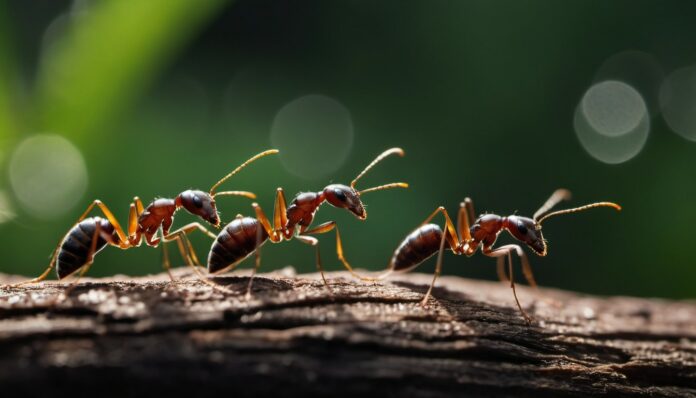Ants are incredibly diverse and fascinating insects, known for their complex social structures and behaviors. Here are some intriguing facts about these industrious creatures.
Interesting Facts About Ants:
- Communication: Some ant species use a special “language” to communicate with each other, allowing them to perform complex, multi-step tasks together.
- Diversity: There are about 8,800 known species of ants on Earth, each with unique characteristics. For example, common red forest ants differ significantly from black ants, which are often found in our homes.
- Food Distribution: The food found by ants is not immediately eaten but passed along a chain of command. It can only be distributed within the colony under the strict supervision of the queen.
- Lifespan: While the typical lifespan of ants ranges from 30 to 90 days, some queens can live for 20 to 30 years.
- Bullet Ants: Known for having one of the most painful stings in the insect world, bullet ants get their name because their sting feels like being shot. The pain from a bullet ant sting can last for up to 24 hours and is rated as one of the most intense in the Schmidt Sting Pain Index.
- Caring for Offspring: Worker ants categorize eggs and larvae strictly by age groups, aiming to protect their offspring. However, some ants, known as blood-sucking ants, drink the blood of larvae.
- Stretching and Yawning: Upon waking, ants stretch their legs and mandibles in all directions, similar to how humans stretch and yawn.
- Dual Stomachs: Ants have two stomachs – one for storing food for themselves and another for sharing food with other ants in the colony.
- Medicinal Uses: Formic acid, known for its medicinal properties, has long been used to reduce inflammation and pain.
- Brain Power: An ant’s brain contains about 250,000 cells, while a colony’s collective brain, composed of 40,000 ants, functions similarly to a larger brain.
- Winter Preparations: A primary activity for ants is preparing food for winter. They collect grains at night, hide them, and then bring them out to dry in the sun during the day. They do this in good weather and never retrieve their supplies before it rains.
- Navigational Skills: Ants always move in groups and find their way back to the nest by leaving a trail of pheromones, which they then follow.
- Nutritional Value: Ants are not very nutritious and can bite hard before dying, which is why many animals, except for anteaters, avoid eating them.
- Learning from Others: Ants can learn from the experiences of other ants when necessary.
- Sound Detection: Interestingly, ants detect sounds through their feet and knees. When the ground vibrates, they can feel it.
- Community Vaccination: If ants find that their relatives are infected with parasitic fungus spores, they will not isolate them but will conduct a community vaccination program.
- Tech Similarity: Scientists at Stanford University have discovered similarities between the food gathering principle of red harvester ants and the TCP/IP protocol algorithm used on the Internet.
- Avoidance by Predators: Ants are generally not attractive to birds or predatory wasps due to their aggressiveness and low nutritional value.
- Argentine Ants: Argentine ants are an invasive species that originally inhabited the Paraná River basin in South America. Due to unintentional human involvement, they have now spread to almost all continents.
